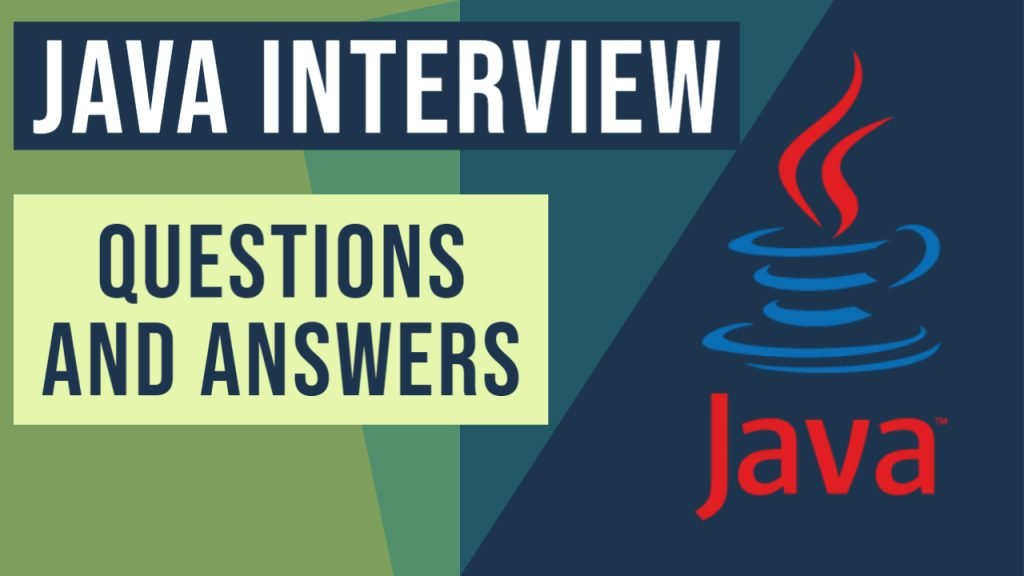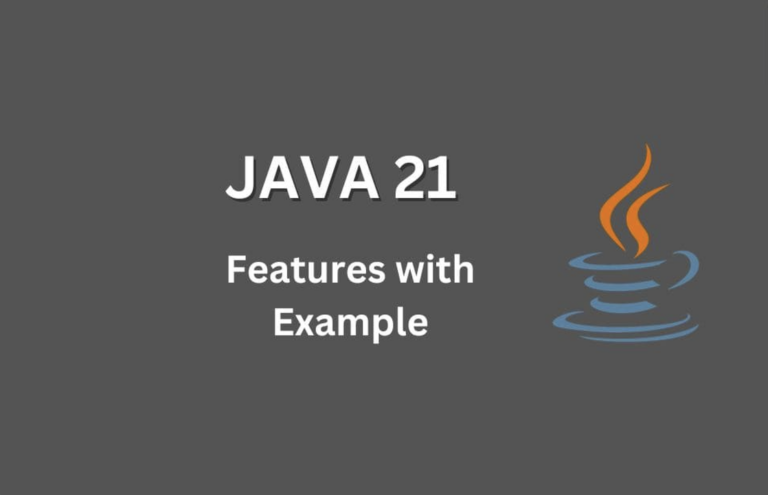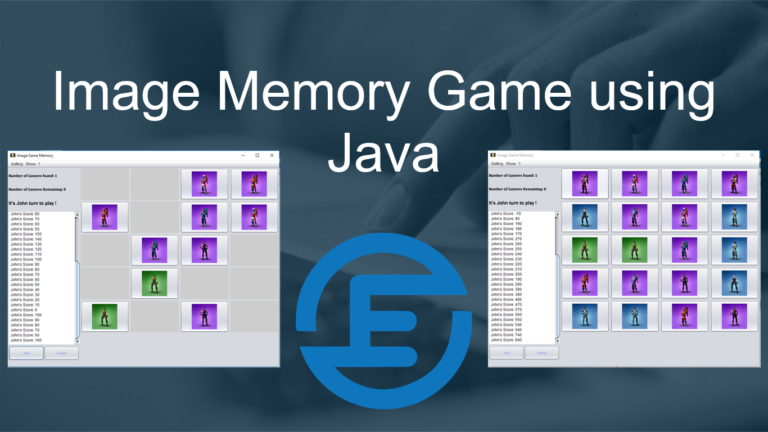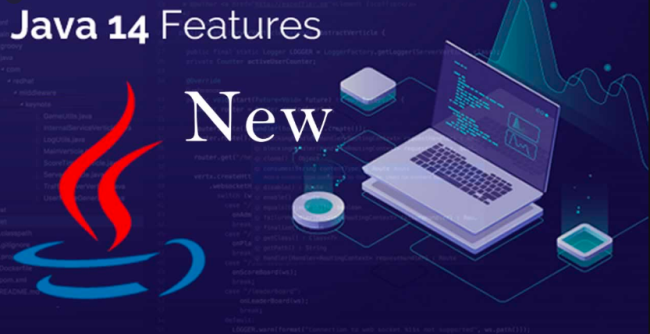Java Q&A Tutorial: Commonly Asked Questions Answered
Introduction
Welcome to our comprehensive Java Q&A tutorial!
Whether you’re a beginner looking to learn Java or an experienced developer seeking to deepen your understanding, this tutorial covers commonly asked questions about Java programming.
From basic concepts to advanced topics, we’ve got you covered.
get more tutorials about Java in elgarnaoui.com/java.
Table of Contents:
- Introduction to Java
- Java vs. JavaScript
- Principles of Java Programming
- Main Features of Java
- Classes and Objects in Java
- Methods in Java
- Inheritance and Polymorphism
- Access Modifiers and Encapsulation
- Constructors and Constructors vs. Methods
- Java Virtual Machine (JVM) and Java Development Kit (JDK)
- Packages in Java
- Abstract Classes and Interfaces
- Static Methods and Final Keyword
- Method Overloading and Method Overriding
- “this” and “super” Keywords
- Threads and Synchronization
- Exception Handling
- Functional Programming in Java
- Collections Framework
- Lambda Expressions and Stream API
- File Handling
- Miscellaneous Java Concepts
Each section will contain several questions and detailed answers, along with examples where applicable. Let’s dive into the world of Java programming!
-
Introduction to Java:
- What is Java?
Java is a high-level, object-oriented programming language developed by Sun Microsystems (now owned by Oracle). It is designed to be platform-independent, meaning that Java code can run on any device that has a Java Virtual Machine (JVM).
- Why is Java popular?
Java’s popularity stems from its platform independence, robustness, security features, and extensive libraries and frameworks. It is widely used in various domains, including web development, mobile apps, enterprise applications, and more.
- What are the key features of Java?
Some key features of Java include platform independence, object-oriented programming, automatic memory management (garbage collection), strong type checking, and extensive standard libraries.
- How do you install Java?
To install Java, you can download the Java Development Kit (JDK) from the official Oracle website and follow the installation instructions for your operating system.
-
Java vs. JavaScript:
- What are the differences between Java and JavaScript?
Java is a statically-typed, compiled programming language primarily used for server-side development and standalone applications.
JavaScript, on the other hand, is a dynamically-typed, interpreted scripting language primarily used for client-side web development.
- Can Java code run in a web browser?
Java applets used to run in web browsers, but they have largely been deprecated due to security concerns.
JavaScript is now the preferred language for client-side web development.
-
Principles of Java Programming:
- What is the principle of “write once, run anywhere” (WORA)?
The principle of WORA means that Java code can be written once and run on any platform that has a Java Virtual Machine (JVM) installed, without the need for recompilation.
- How does Java achieve platform independence?
Java achieves platform independence by compiling source code into bytecode, which is a platform-independent intermediate representation.
The bytecode is then executed by the JVM, which is platform-specific but available for most major operating systems.
- What is bytecode?
Bytecode is a platform-independent intermediate representation of Java code.
It is generated by the Java compiler from source code and can be executed by any JVM, making Java programs portable across different platforms.
-
Main Features of Java:
- Explain platform independence in Java.
Platform independence in Java refers to the ability of Java code to run on any platform without modification.
This is achieved by compiling Java source code into bytecode, which can be executed by any JVM, regardless of the underlying hardware or operating system.
- What is object-oriented programming (OOP) in Java?
Object-oriented programming is a programming paradigm based on the concept of objects, which can contain data in the form of fields (attributes) and code in the form of methods.
Java is a fully object-oriented programming language, supporting encapsulation, inheritance, and polymorphism.
- How does Java handle memory management?
Java employs automatic memory management through a process called garbage collection.
The JVM automatically deallocates memory occupied by objects that are no longer in use, freeing developers from manual memory management tasks.
-
Classes and Objects in Java:
- What is a class in Java?
A class in Java is a blueprint or template for creating objects.
It defines the properties (attributes) and behaviors (methods) that objects of that class can have.
- How do you create objects in Java?
Objects in Java are created using the new keyword followed by a constructor call.
For example:
MyClass obj = new MyClass();
- Explain constructors and their types in Java.
Constructors in Java are special methods used to initialize objects. They have the same name as the class and no return type.
Java supports several types of constructors, including default constructors (no-argument), parameterized constructors, and constructor chaining.
-
Methods in Java:
- What is a method in Java?
A method in Java is a block of code that performs a specific task. It can be called or invoked to execute its defined functionality.
- How do you define and call a method in Java?
Methods in Java are defined within a class using the following syntax:
returnType methodName(parameters) {
// method body
}
To call a method, you use the method name followed by parentheses and any required arguments:
object.methodName(arguments);- Explain method overloading and provide an example.
Method overloading in Java allows you to define multiple methods with the same name but different parameter lists within the same class.
The appropriate method is called based on the arguments provided.
Here’s an example:
class MathOperations {
// Method to add two integers
int add(int a, int b) {
return a + b;
}
// Method to add three integers
int add(int a, int b, int c) {
return a + b + c;
}
}
-
Inheritance and Polymorphism:
- What is inheritance in Java?
Inheritance is a mechanism in Java where a class (subclass) can inherit properties and behaviors from another class (superclass).
It allows for code reuse and creating a hierarchical relationship between classes.
- Explain method overriding and provide an example.
Method overriding in Java allows a subclass to provide a specific implementation of a method that is already defined in its superclass.
Here’s an example:
class Animal {
void makeSound() {
System.out.println("Animal makes a sound");
}
}
class Dog extends Animal {
@Override
void makeSound() {
System.out.println("Dog barks");
}
}
-
Access Modifiers and Encapsulation:
- What are access modifiers in Java?
Access modifiers in Java control the visibility and accessibility of classes, methods, and variables.
Java provides four access modifiers: public, private, protected, and default (no modifier).
- What is encapsulation in Java?
Encapsulation is the process of hiding internal details of an object and providing a public interface to interact with it.
It helps achieve data abstraction and protects data from unauthorized access.
-
Java Virtual Machine (JVM) and Java Development Kit (JDK):
- What is the Java Virtual Machine (JVM)?
The JVM is a crucial component of the Java platform responsible for executing Java bytecode.
It provides a runtime environment in which Java programs can run on any hardware or operating system.
- What is the Java Development Kit (JDK)?
The JDK is a software development kit provided by Oracle, which includes tools and libraries for developing, compiling, and running Java programs.
It consists of the JVM, compiler, and other utilities.
-
Exception Handling:
- What is an exception in Java?
An exception in Java is an event that occurs during the execution of a program, disrupting the normal flow of instructions.
It represents an error condition or an exceptional circumstance.
- How do you handle exceptions in Java?
Exceptions in Java can be handled using try-catch blocks.
The code that may throw an exception is placed inside the try block, and if an exception occurs, it is caught and handled in the catch block.
-
Java API and Packages:
- What is the Java API?
The Java API (Application Programming Interface) is a collection of classes, interfaces, and other resources provided by the Java Development Kit (JDK).
It provides predefined classes and methods for building Java applications.
- What is a package in Java?
A package in Java is a way of organizing related classes and interfaces.
It provides a namespace and helps avoid naming conflicts. Packages can be nested within each other to create a hierarchical structure.
-
Multithreading:
- What is a thread in Java?
A thread in Java is a lightweight unit of execution within a program.
It allows concurrent execution of multiple tasks or activities, enabling better utilization of system resources.
- How do you create and start a thread in Java?
Threads in Java can be created by extending the Thread class and overriding the run() method, or by implementing the Runnable interface and passing it to a Thread object.
Threads are started by calling the start() method.
-
Collections Framework:
- What is the Collections Framework in Java?
The Collections Framework in Java is a unified architecture for representing and manipulating collections of objects.
It provides interfaces and classes for working with collections such as lists, sets, maps, and queues.
- What are the main interfaces in the Collections Framework?
Some of the main interfaces in the Collections Framework include List, Set, Map, and Queue.
These interfaces define common operations and behaviors for different types of collections.
-
Lambda Expressions and Streams:
- What is a lambda expression in Java?
A lambda expression in Java is an anonymous function that can be used to simplify the syntax of functional interfaces.
It allows for more concise and readable code, especially when working with functional programming constructs.
- What is the Stream API in Java?
The Stream API in Java provides a mechanism for processing collections of objects in a functional-style manner.
It allows for operations such as filtering, mapping, sorting, and reducing elements in a collection.
-
File Handling:
- How do you read and write files in Java?
Files in Java can be read and written using classes from the java.io package, such as FileInputStream, FileOutputStream, BufferedReader, and BufferedWriter.
These classes provide methods for reading from and writing to files.
-
Serialization:
- What is serialization in Java?
Serialization in Java is the process of converting an object into a stream of bytes, which can be stored in a file or transmitted over a network.
Deserialization is the reverse process, where the byte stream is converted back into an object.
- How do you serialize and deserialize objects in Java?
Objects in Java can be serialized by implementing the Serializable interface.
Once implemented, objects can be written to an ObjectOutputStream and read from an ObjectInputStream to perform serialization and deserialization, respectively.
-
Generics:
- What are generics in Java?
Generics in Java allow classes and methods to operate on objects of various types while providing compile-time type safety.
They enable the use of parameterized types, which specify the type of objects that a class or method can work with.
- How do you define a generic class in Java?
A generic class in Java is defined by specifying one or more type parameters within angle brackets (<>) when declaring the class.
These type parameters can then be used as placeholders for specific types within the class definition.
-
Annotations:
- What are annotations in Java?
Annotations in Java are metadata that provide data about a program, which can be used by the compiler or other tools for additional processing.
They are represented by @ symbols followed by an annotation type.
- How do you create and use annotations in Java?
Annotations in Java can be created by defining an annotation interface, which can then be used to annotate classes, methods, fields, and other program elements.
Annotations can also have elements with default values.
-
Reflection:
- What is reflection in Java?
Reflection in Java is the ability of a program to inspect and modify its own structure and behavior at runtime.
It allows accessing class information, such as methods, fields, constructors, and annotations, dynamically.
- How do you use reflection in Java?
Reflection in Java is primarily performed using the java.lang.reflect package, which provides classes such as Class, Method, Field, and Constructor for accessing class metadata and performing operations such as invoking methods and accessing fields.
-
JDBC (Java Database Connectivity):
- What is JDBC in Java?
JDBC (Java Database Connectivity) is a Java API for connecting and interacting with relational databases.
It provides a standard interface for accessing databases, executing SQL queries, and processing results.
- How do you connect to a database using JDBC?
To connect to a database using JDBC, you need to load the database driver, establish a connection using a Connection object, create and execute SQL statements using Statement or PreparedStatement objects, and process the results.
Conclusion
These are some of the fundamental topics in Java programming, covering areas such as language syntax, object-oriented programming, exception handling, collections, file handling, serialization, generics, annotations, reflection, and database connectivity.
Mastering these concepts will provide a solid foundation for building Java applications.







